BY LEENA VARGHESE
Nov 2019
A couple of years ago, I had the good fortune to watch Tchaikovsky’s renowned classical ballet, Swan Lake, being performed in the Mumbai NCPA Theater. I was transported back to the time when I was a little girl, leaping from the sofa to the floor, and my futile attempts to stand on my toes, pretending to be a prima ballerina. For someone like me whose introduction to ballet was through an old black and white TV in the eighties, it is difficult to express how stunning the visual experience of watching a live show was. The thrill of seeing dancers leaping like gazelles, their effortless pointe, and being transformed into graceful swans was such a treat to the eyes and soul that I was tempted to demand an encore. I earnestly wished to stamp those moments upon my memory so that I could paint them. However, my limited repertoire could never capture the sheer magic of Swan Lake and the spectacular musical composition that accompanied it.
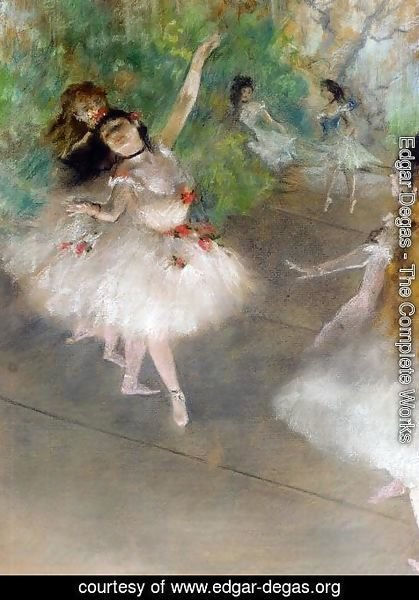
Later, unerringly, I kept remembering images of frozen moments in paint on an Edgar Degas canvas, where ethereal ballerinas were immortalised in form and movement years ago. Along with that came questions that have prodded me for answers since a long time.
Why do we paint, or perform on stage, compose music or write stories? More importantly, what is the true purpose of art, and how, and why does it affect us at an emotional, intellectual or spiritual level?
Man’s need to record the grand events in history, be it religious rituals or local lifestyles on the walls of ancient caves in the form of petroglyphs thousands of years ago, indicates how indispensable art is to humanity. In medieval India, art was all about finesse and elegance, achieved through miniature paintings that depicted Maharajas and Emperors, showcasing an era of ultimate refinement to exquisite perfection.
Many artists all over the world, both modern and traditional have left a huge impact on the way art has been viewed since centuries, bringing about revolutionary changes, displaying a plethora of astoundingly beautiful images in harmony and symmetry. It showed us a glimpse of what these greatest minds thought of religions and class systems and human interactions.
Personally, art has influenced me in more ways than I can recall. It’s not just the rich colours that make me feel happy but also the idea of representing a real object in those colours, transforming it into a thing of beauty forever through the artist’s brush. From hyper-realistic portraits and photographic landscapes, to ambiguous abstracts that have endless possibilities and numerous indefinite conclusions, great art challenges the viewer’s notions about the definition of perfection.
I can never get enough of looking at a renaissance painting, be it Da Vinci or Michael Angelo, or Vermeer from the Baroque period. The sheer poetry and movement, the real flesh tones that seem warm to touch, the brilliant inimitable play of chiaroscuro, the opulent robes and the silken hair, the textures and the fine finish! It’s an experience designed to appeal to all your five senses…with just paint!
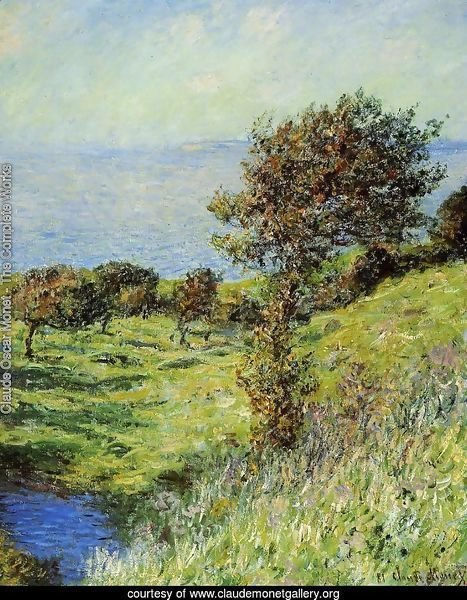
How can I forget the works of Monet in jewel-like primary colours that capture fleeting atmospheric transition in light and changing seasons on a canvas? My favourite is August Renoir’s The Gust of Wind which is just patches of fluffy clouds and viridian grass on a hillock on a lovely day. You can almost hear and feel the wind playing between the blades of quivering grass, and the clouds might just have been floating idly. It never fails to impress me that mere dabs of colour strategically placed to create an image, apparently imperfect, can create a stunningly perfect effect when you step back and take a second look.
Art to me is a fierce expression of emotions too. Frida Kahlo, with her eviscerating portrayal of wounded femininity stands out as a shining example. The metaphors and imagery in her art work are brutal and certainly not designed to please or titillate. I cannot but feel disturbed by the women in her paintings, many of them self-portraits, bracketed into boxes of socio-cultural expectations.
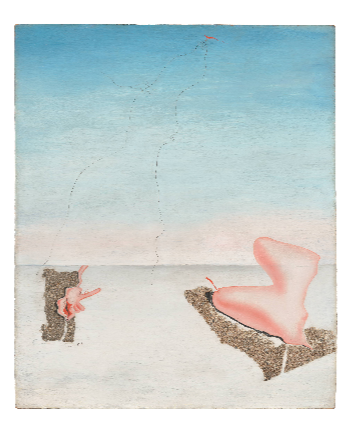
Salvador Dali’s sensational, technicolour, surreal landscapes are quests beyond the boundaries of human understanding. When I was young, in my ignorance, I used to find his art ridiculous. It was only many years later that I began to explore the bizarre, disjointed figures and metaphorical meaning behind his body of work that are now considered pure genius and claimed to be largely influenced by Freudian theories on the unconscious mind.
And then I fall into the mind-altering world of tessellation and optical illusions by M. C. Escher to surface from one end of a boggling universe of stairs and doorways, into an abyss where one could undergo transfiguring changes in mere seconds. A lenticular painting can simply render one speechless by its clever, dual personality and shape-shifting that happens right in front of one’s eyes like magic!
However, what brings an ecstatic response from one and all, perhaps, is a drawing done by a child. Tender hands that create innocent, vivid images of a yellow sky, blue grass, or a flying cow, that don’t make sense in an adult’s world. But it melts the heart and compels the hardest critic to proudly display it beneath a fridge magnet or between the pages of a scrapbook of personal memories.
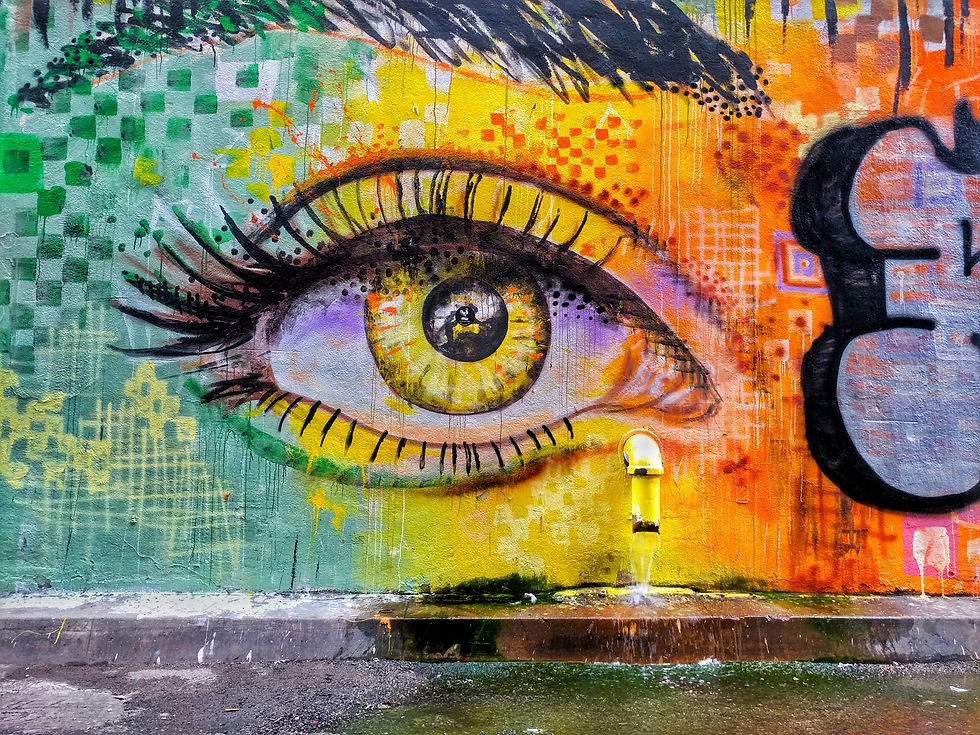
The angst-ridden, rebellious world of graffiti art, that boldly desecrates the established structures of human society, could be equated to rap music and hip hop, expressing deep hurt and questions on identity.
As I ponder more about these reasons for creativity, I also wonder why people react to the same piece of art in different ways.
Most artists are known for their untitled expressions. They leave it to the viewer’s imagination to interpret at will what they see. A painting is transformed into an artwork in the viewer’s eyes depending on his state-of-mind or his personal experiences. An interactive artwork flings open the doors of limitless imagination to the viewer’s discretion. What looks like a blob of colour to one person may result in a visceral reaction from another, or even appear as the answer to his lifelong quest. Sometimes, a work of art may just be a thing of beauty at a certain stage in our lives, but gains credence as we evolve into mature beings, developing a personal relationship with it, turning it into a masterpiece.
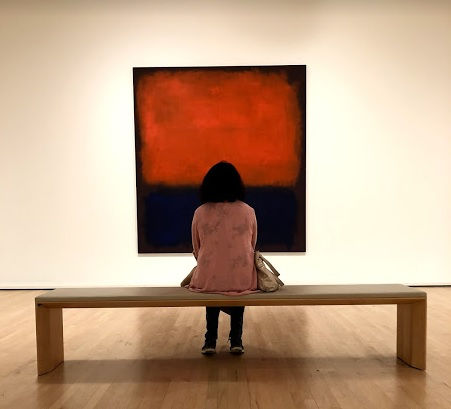
It brings me to the point where I look at a timeless piece of creation in breathless wonder and hope that it would bring peace to a world of chaos and violence around us. I often feel astounded that an oasis of peace and self-awareness is created in that little bubble of time when all the pain and conflict we endure as a human race is suspended to bring us considerable relief and joy. In a life full of trials and tribulations, beautiful art, whether it is a splash of colour, the harmonious sounds of a musical instrument, or the inspiring words of a great author, can become a vital source of inspiration to all.
Someone asked me why I write romance. My answer was - It supports the highest form of idealism. I call it the ultimate form of beauty. Even though the characters are flawed, they are heroes with admirable traits like courage, integrity and compassion. Those are the highest ideals for me. A lot of me would seep into my creation, even though it is all imagination. My belief system and my ethics and values would invariably colour my creations, just like it does in all art forms.
In my humble opinion, a true work of art is something that transports us from the mediocrity of routine and mindless existence and helps us to face the future with renewed hope.
About the Writer
Leena Varghese is an eclectic writer who has authored books as diverse as a Mills& Boon romance to a paranormal/psychological thriller. She loves to write heart-warming stories that are both entertaining and meaningful. Her writing ranges from animated expression to silent contemplation, laced with a dash of humour, passion, intrigue and hope. She also dabbles in illustrating children’s books. And of course we discovered this talented lady when she attended our first ever watercolour painting workshop.
You can find her on:
Amazon Author Page: http://bit.ly/LeenaVarghese
Goodreads Page:http://bit.ly/Leena_V_Goodreads


Comments